Most of the time, I like to knit with natural fibers. There’s a whole host of reasons for that, which we can get into later, but I want to make sure one thing is very clear here: acrylic yarn has a place in my stitching life, too.
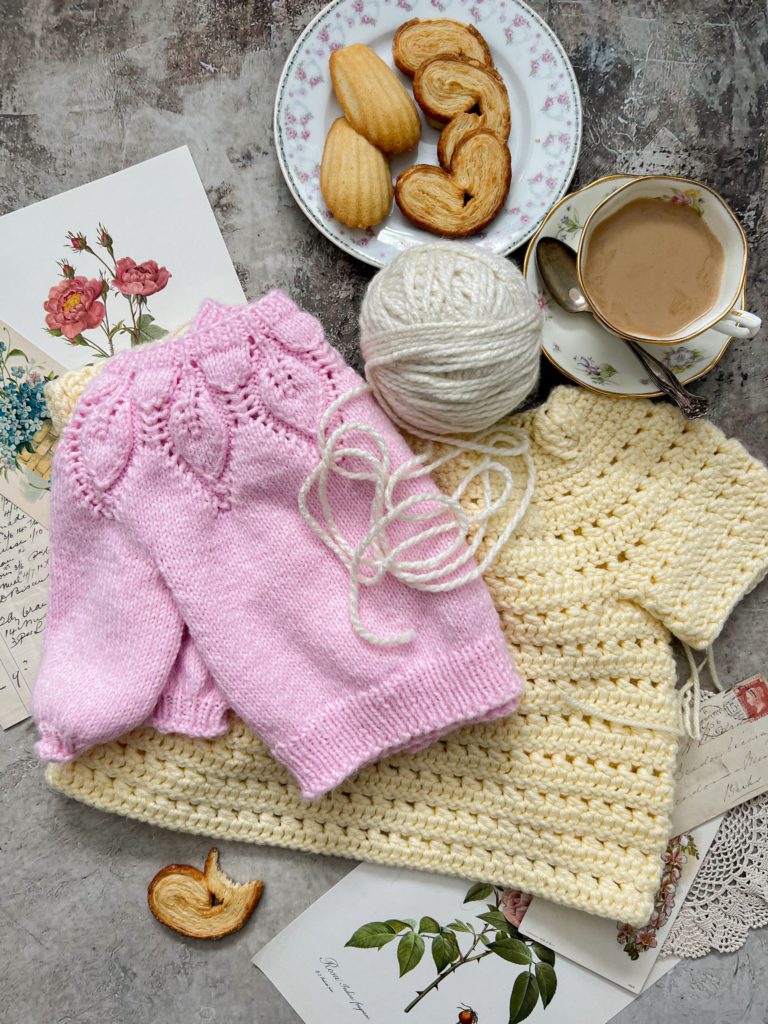
Now, there are absolutely reasons you might choose to avoid acrylic yarns for yourself. They have a negative environmental impact, they aren’t great for moisture-wicking, and they can have a kind of odd, squeaky texture while you’re working with them. These are valid concerns.
But knitters have a bad reputation for being incurable yarn snobs, too, and for making others feel unwelcome when those other knitters are using acrylics. I have no time or patience for that. It’s one thing to choose only natural fibers for yourself, but it’s another thing altogether to sneer at other knitters for making different choices.
We don’t do that here.
The wool vs. acrylic yarn debate has raged for ages, and I’m not under any illusions we’ll solve it here in this one blog post. The truth is, there are all sorts of perfectly valid reasons to choose an acrylic yarn.
Here are some of the reasons that I sometimes decide acrylic is the right choice for my project.
Acrylic yarn is easy to care for.
Sometimes, I’ll choose acrylic yarn for a project that I know will get a lot of use or that will need to be washed regularly. If I’m knitting for my kid or making a blanket, nine times out of ten, I’ll be using a yarn that is primarily or entirely made of synthetic fibers.
That’s because it’s absolutely true that acrylic yarn is easier to care for than most animal fibers. I can throw those projects in the washer and dryer without worrying. There’s no stressing about felting in the wash. I don’t have to lay things flat to air dry. I just wash and go.
And when I’m caring for little sweaters covered in PB&J remnants or blankets that regularly get used when someone is sick, that ease of care is a big deal.
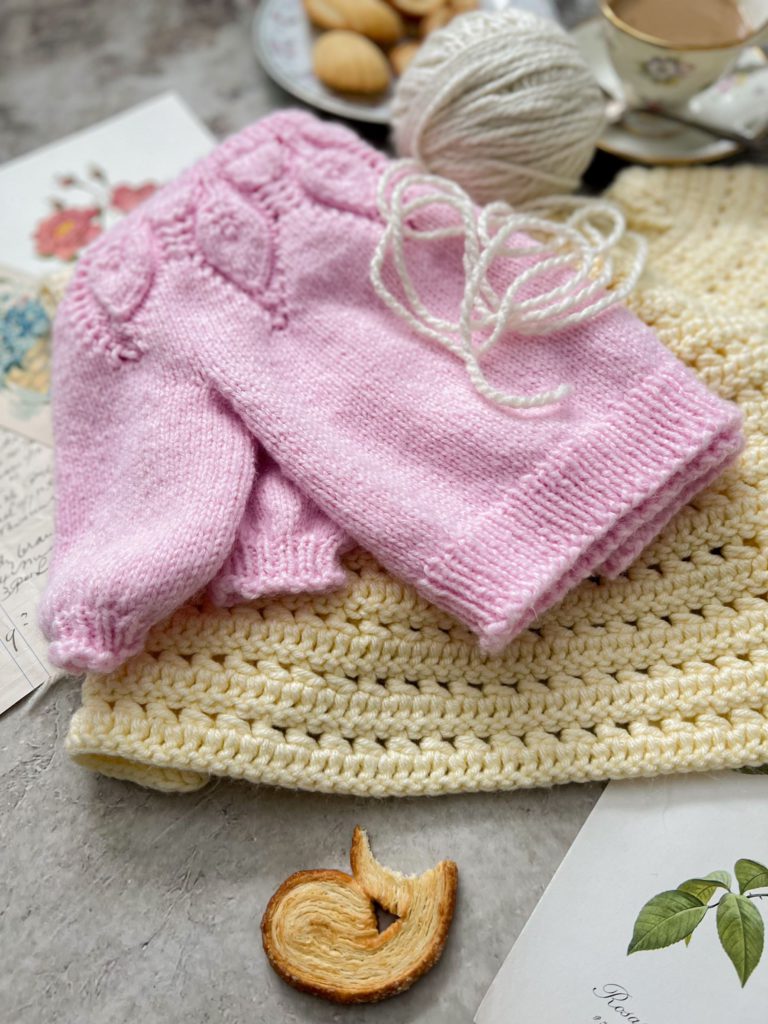
Also, if I’m honest, I’m pretty forgetful. I try to be careful, but I’ve felted knits on accident before (RIP, my beloved Berry Scone Shawl). While knits for myself don’t need to be washed often, so I can minimize the risk of forgetting they’re involved in the laundry, household knits and knits for my kid need a little more frequent laundering.
It can be less stressful for the recipient.
I don’t knit gifts often, again for a whole host of reasons, but when I do, I always check with the recipient about their fiber preferences.
Sometimes they don’t care. Sometimes they’re fine with a natural fiber for a special item but would prefer synthetics for everyday wear. Sometimes they have a strong preference for one or the other.
And whatever the recipient wants, that’s the fiber I use.
Often, when I make baby gifts, the new parents tell me they’re too worried about taking care of handknits made with fancy yarns. In those cases, I’ll often use acrylic to help cut down on the stress for them. They’ve got enough on their plates without worrying about whether they’re going to ruin something I’ve spent 12 hours making.
That’s a driving force behind my gift knitting philosophy, and something we’ll have to explore here soon. Ultimately, a gift that makes work (even emotional work) for the recipient isn’t much of a gift.
Acrylic yarn can be less expensive.
There’ve been times in my knitting journey where there wasn’t a ton of spare room in the budget. I economized in lots of places, and yarn choices were an easy way to do that. Acrylic yarns tend to be less expensive than most wool yarns (though this isn’t an absolute, and if you want to use wool, don’t let budget scare you away!).
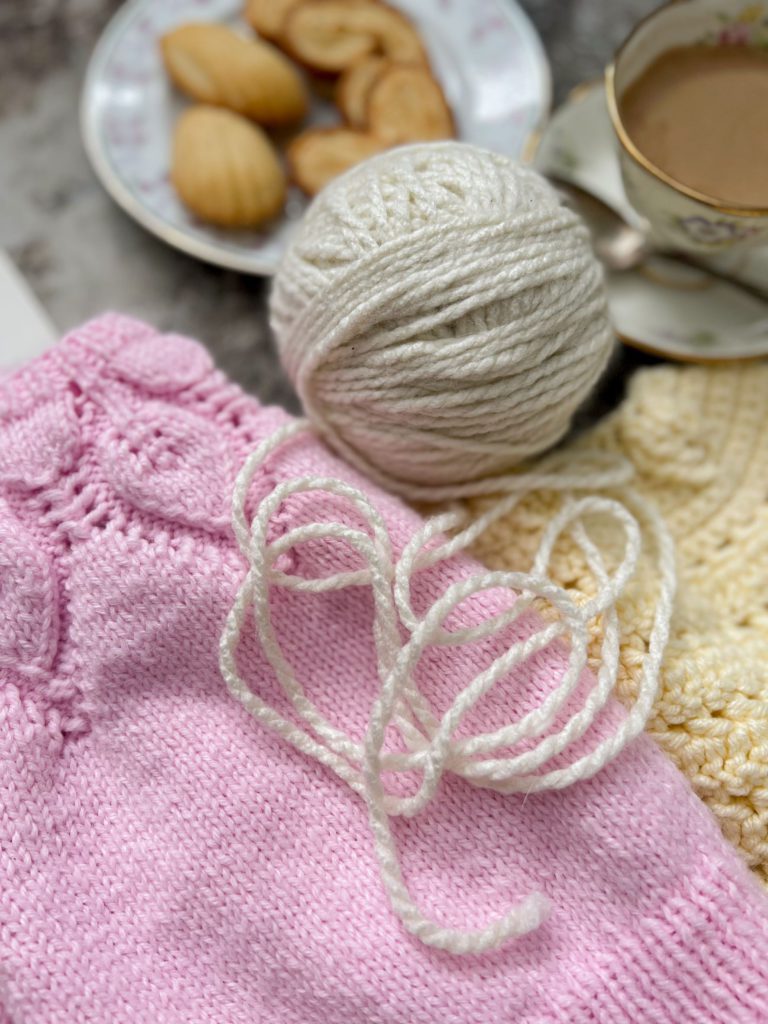
Even now, when finances are less of a concern, I’ll sometimes opt for acrylic for a very large project. If I’m going to be using 2,000 yards of yarn or more, that can get pretty pricey pretty fast, even with budget wools.
In that scenario, an acrylic yarn is one way to help control the cost.
It’s easily accessible.
I grew up in a town that, while not small, didn’t have a lot of fancy amenities. I had never heard of a local yarn shop until I was in my 20s.
So it will probably not surprise you to learn that I grew up working with acrylic yarn. It was what we had available, and it was abundant. My friends and I made blankets for our dolls and experimented with weaving on toy looms. Acrylic yarn helped our imaginations grow.
Nowadays, I’m back in that hometown, and while it has changed quite a bit, the nearest dedicated LYS is still 40 minutes to an hour away (depending on traffic). I’ve got a small kid and not a ton of spare time, and sometimes I just need to pop into the store to get an extra skein of yarn to finish a project.
It’s nice to be able to just walk into a big box craft store and pick up what I need.
Pests generally don’t eat acrylic yarn.
Moths, carpet beetles, and silverfish are the bane of those of us who like to work with animal fibers. There’s nothing worse than opening up a hank of yarn, only to find the telltale splitty signs that show some little critter has been munching on it.
It’s even worse to find those telltale signs in a finished project we’ve spent hours working on.
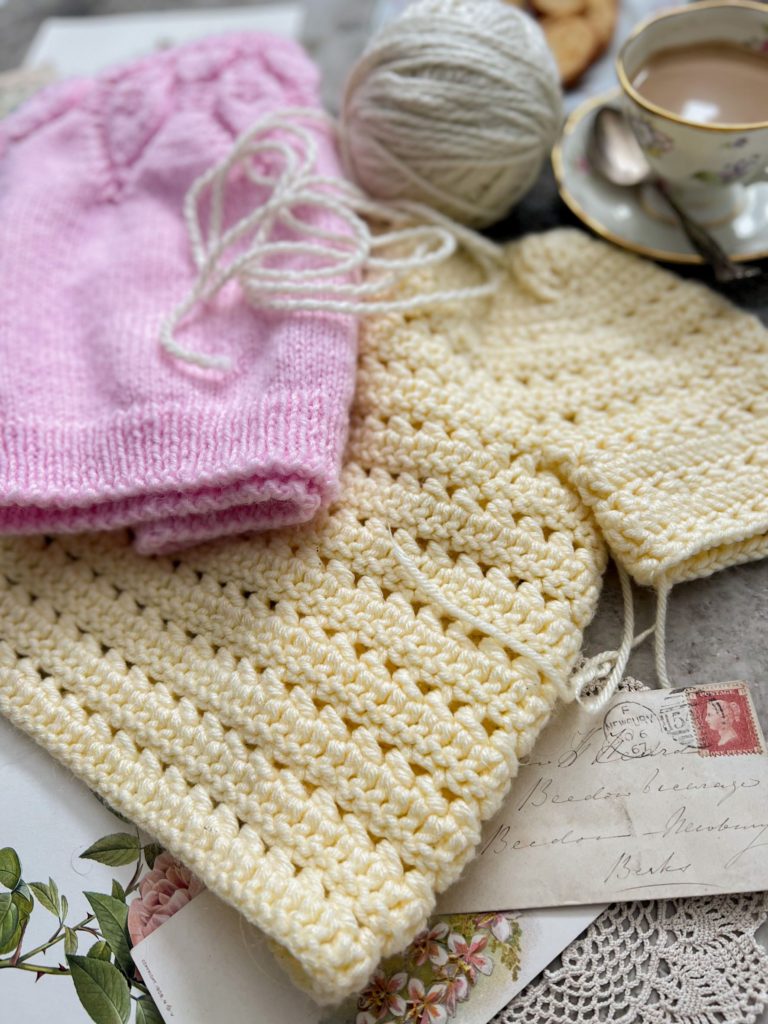
There are, of course, things you can do to help cut down on the possibility of creepy crawlies getting into your animal fibers. You can use cedar sachets, regularly air and rotate your wool, be sure to wash garments before storage, and more. Plenty of knitters never have a pest problem.
But you can also avoid the problem by using a material that pests won’t want to snack on.
Acrylic is a synthetic material (essentially, plastic), which isn’t exactly great for any digestive system, even an insect’s. As a result, they don’t tend to nibble on acrylic yarn (though if you put your knits away for an extended period of time after you’ve worn them, and you don’t wash them beforehand, critters can still be drawn to sweat, body oils, and dropped bits of food left behind on the garment). While there are other concerns involved in using a synthetic fiber and there are lots of considerations to weigh when choosing wool vs. acrylic yarn, this is certainly a benefit.
Acrylic can be soft and pleasant against the skin.
Some knitters are concerned about using acrylic yarns because they’re haunted by memories of scratchy acrylics that feel rough in the skein and even worse against the hands. Those yarns are definitely still out there, but modern acrylics have a wider range of quality and textures.
A high quality acrylic yarn can feel wonderfully soft against the skin, which can be a good thing if you’re knitting for somebody with sensitive skin who also can’t wear animal fibers for whatever reason. While you may still have some issues with acrylic’s breathability and absorption, a good quality acrylic won’t feel scratchy.
Ultimately, every knitter has to balance and evaluate their own needs and priorities when making fiber choices. There are so many factors that go into the yarns we choose, and that’s okay! Each of us is on our own knitting journey.
But as for me and my knits, there will always be room for a bit of acrylic in there. After all, if I don’t use it right away, it’ll keep.
How about you? Drop me a note in the comments and let’s chat about fiber content.
Let’s stay connected!
Join my newsletter for 30% off all new releases, regular updates with helpful tips and tricks, first crack at registration for upcoming workshops, exclusive discounts, and more.
Join the A Bee In The Bonnet Facebook Group to participate in knitalongs and other fun community events
Come hang out with me on the A Bee In The Bonnet TikTok
Follow along on the A Bee In The Bonnet Instagram
Get inspired via the A Bee In The Bonnet Pinterest

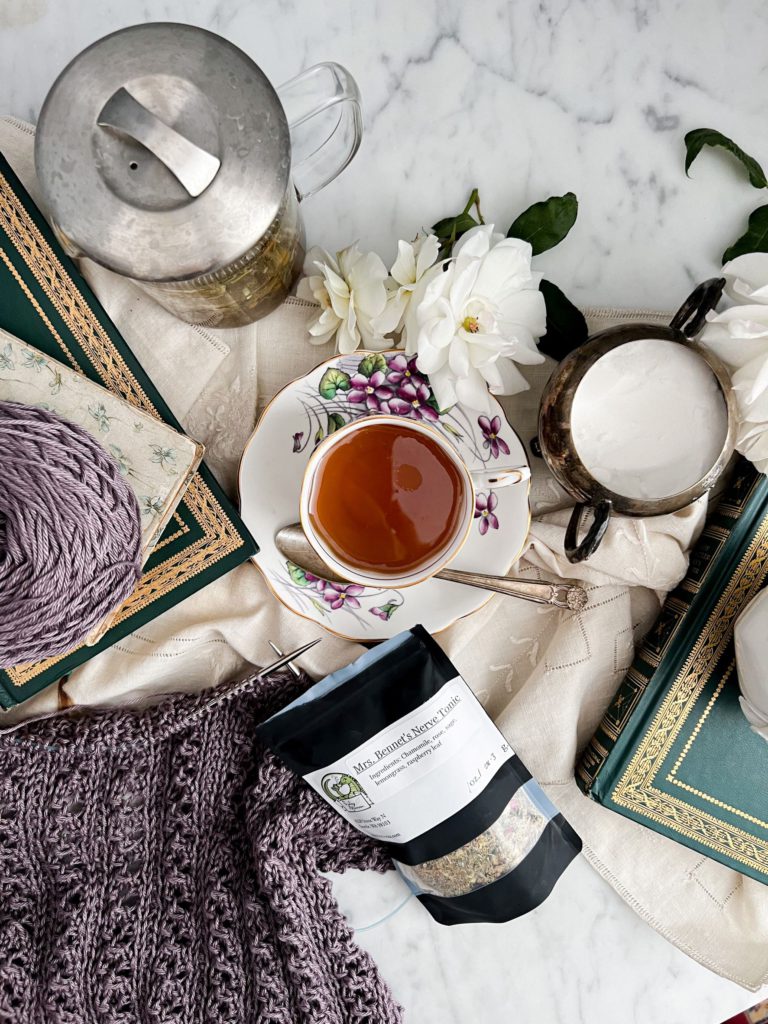
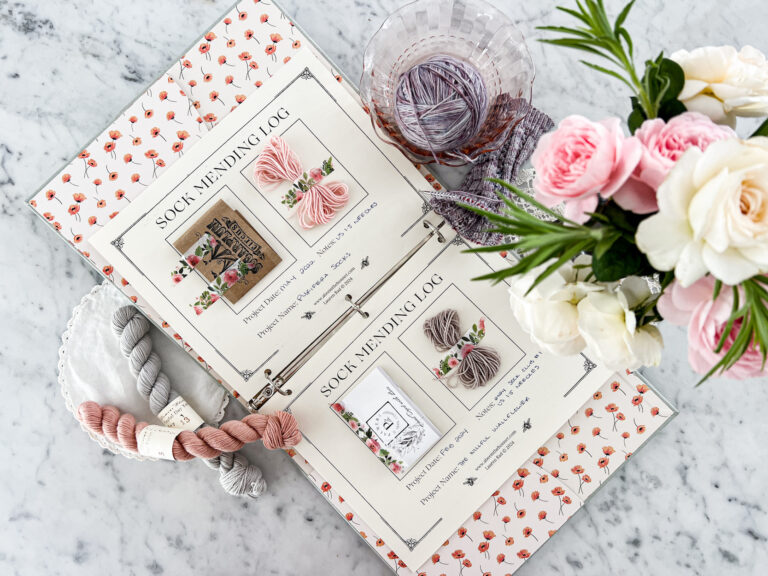

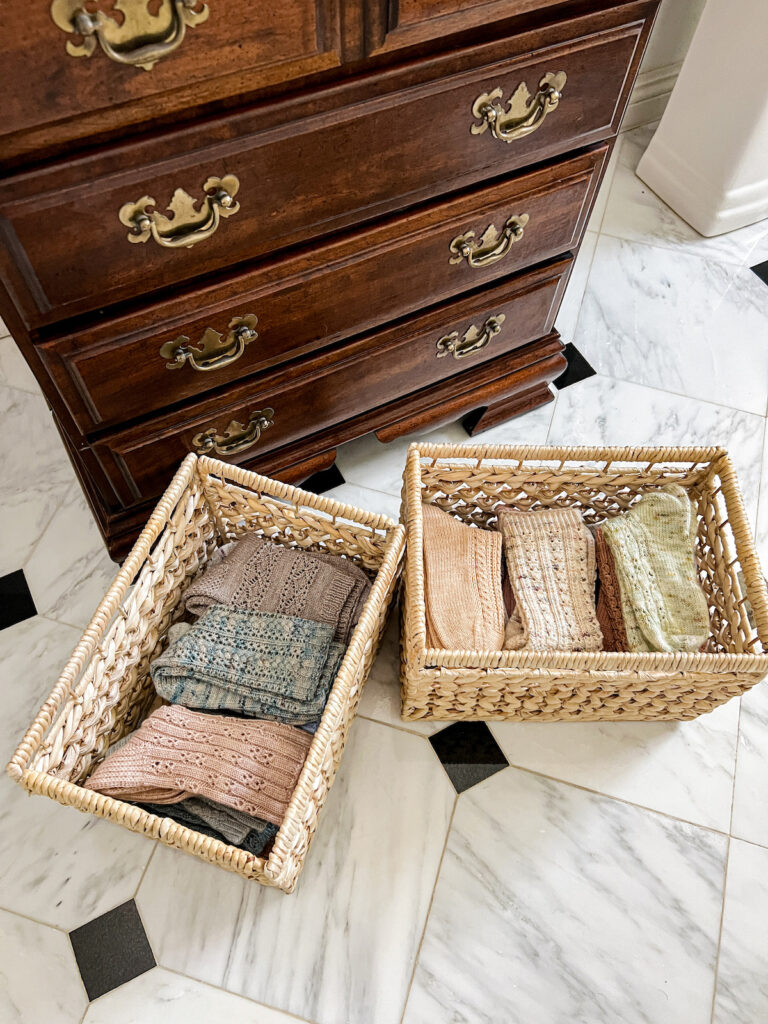
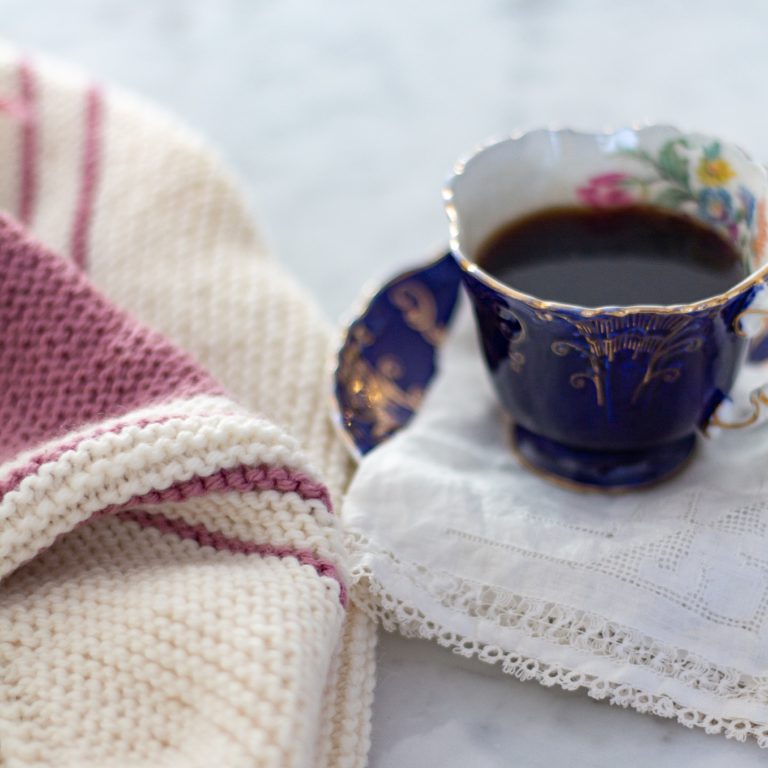
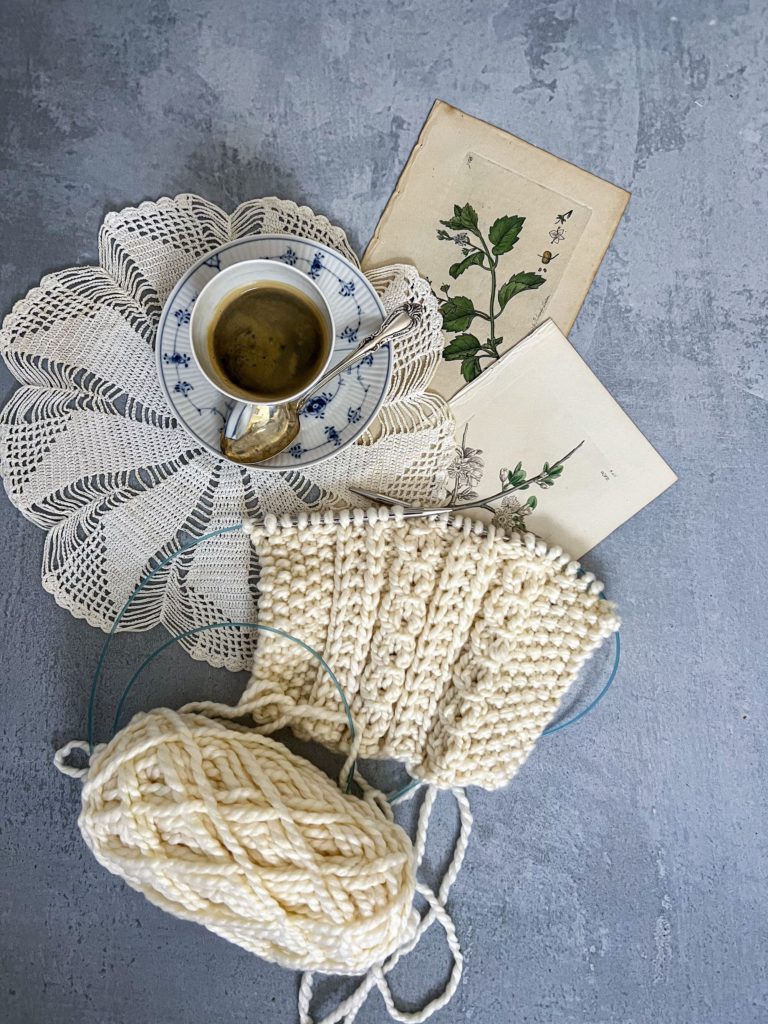
I guess I have been a bit of a yarn snob, preferring luxury yarns and blends. I am trying to be more open to using acrylic yarn, especially for baby items. I think that some of the baby items I have gifted do not get used because people are afraid of ruining them in the laundry.
Can you suggest some great acrylic yarns? What are your favorites?
That’s definitely a common concern! I really like the Premier Yarn Anti-Pilling Everyday Worsted, which is pretty durable and comes in a lot of pretty colors. Bernat Softee Baby is great for makes for little ones. Both of the sweaters here were made with Lion Brand Pound of Love, which feels scratchy at first but softens up really nicely after a couple washes.
I have knitted for decades and it would be hard to name all of the fibers I have used. I went through my own “yarn snob” era in my 40s and now I just delight in any kind of yard that does the best job for the project. My favorite ever was the Wool DK weight yarn which usually is only found in the Uk and for many years I ordered it. For those who have never used it, it is a kind of cross between our sport weight and worsted. Also silk, linen, tape and all of the novelty yarns which were so great 15 to 20 hers ago. All of that said, no yarn has ever given me more joy than Caron Cakes, which is an 80/20 blend of polyester and wool. It is so reasonable and for awhile it was everywhere. I still love a good Caron Cakes shawl when I can find it.
Oh man, I remember when Caron Cakes were everywhere! I still see them at Michael’s sometimes, and I love all the fun color combinations.
Thank you! I’ve used acrylic due to allergies and having itchy children in the family. I’m branching out into good quality cotton/rayons–my granddaughter had some high quality merino yarn and it sure felt good. So maybe wool is in my future for some projects. Thanks for tackling this.
As an acrylic user, I’ve found the Lion’s Brand yarns to be very good–I love Heartland for Aran weight. I’ve used Loops and Threads (Michaels brand) and Carron.
I’ve been pleased with the Loops and Threads yarns, too! There are so many reasons someone might need to choose a particular fiber, and I’m far more interested in helping them make the best creation possible than in trying to decipher whether they have a reason and whether it’s “good enough” (100% in scare quotes because who gets to decide what’s good enough, anyway?).
I would rather use acrylic or acrylic blend over superwash any day. I have made too many garments that ended up so heavy from superwash yarn. It just grows and droops like nothing else. Where as acrylic tends to be light and toothy even, sometimes. Holding it’s shape better. I love real wool, very much. I prefer to knit my own garments from it, but many people don’t like wool next to skin. And that is totally ok! Navigating choices in knitting for others is part of the stewardship of our time and theirs. Will they use it, and how will it need to be cared for, are valid points of consideration. Simply knitting using only high end indie dyes for brand sake, or only natural wools for purist sake… feels like a kind of maker selfishness, not just snobbery. I think the William Morris philosophy of having nothing in your home that you don’t believe to be beautiful OR useful, is still wisdom in project planning choices. Acrylic, can be both.
I do like superwash as well, but every yarn has its project and every project has its yarn. There are some times where one or another will be better suited to the task. I’d prefer to have the full toolbox of fibers available to me, yanno?
Great points here, but sadly it’s not true that pests won’t eat acrylic yarn. They’ve eaten several synthetic items of mine, including the rubberized palms of my once-favourite cycling gloves.
If it’s been well-used — like the palms of those gloves — or has food residue on it, moths and other critters will eat it. It’s not the fibre they’re really into so much as the body fluids (like sweat) and food residue.
Oh nooooo, I’ve never heard of that happening before! That must have been so frustrating for you.
My thoughts exactly. I have knit a number of baby items in both natural Fibers and acrylic. Most of them have been acrylic because of all the reasons you mentioned. Unfortunately, there are some in my knitting group who are ultimate yarn snobs and would ask: how is the “plastic” baby blanket going? Wish knters would accept ALL knitters and keep their mouths shut.
I’m so sorry they were unkind about your project. Knits of all sorts are welcome here.
I too used acrylic years ago and was always happy with the results, still do.
My beautiful daughter, who is now 57, lol and older then me😂, is absolutely allergic to wool of any kind. So I alway use acrylic for anything I make for her.
I have used wool, and other animal fibers, Noel’s and then, but almost always use acrylic.
I have been crocheting for 73 years and knitting for 70 years. Knitting and crocheting is good for the brain, nerves and whatever ails you!! And both are a lot of fun, too!!
Thank you for your wonderful article! I really appreciate what you had to say about the yarn I like to use the most! ACRYLIC!!
Have a great day, sincerely Maxine😊😄❤️
Thank you for the kind note! I hope to enjoy so many happy years with my yarn, too.
I agree. I like acrylic yarns. I find that for me, right now they are easier to work with. (I am a beginning knitter). And they are easy on the budget.
Welcome to the party! I hope you’re enjoying your learning journey. What exciting adventures you have ahead of you.
When making mitts I combine acrylic with wool blends… Double thickness.. And this actually helps avoid the shrinkage problem a bit… And makes a very sturdy mitt.
Oh interesting! That’s a use I hadn’t thought of.
I relate to all of the above. My first-ever sweater was reduced to doll-size the first time I washed it when my mother (not a knitter) decided to “help me” by putting the just hand-washed 100% wool turtleneck in the spin cycle so it wouldn’t take so long to dry! I’ve made afghans and sweaters for many family members, and always make them in something machine washable and dryable. It avoids stress and heartbreak for all concerned. Have come to love both washable wool and bamboo for letting me combine ease of care with natural beauty, but wool/acrylic blends and quality acrylics are always on the menu.
Oh noooooo, I would have cried over that sweater! So glad you’ve found a path forward that fits your needs perfectly.
Hi! A new follower here, and as someone who has a wool allergy, I always have to work with non-animal fiber options. I almost always choose acrylic, and go with name brand soft acrylics that are easy care; though bamboo or similar options are a great option for some projects they don’t work for all. Currently using Lion brand basic stitch for my second fair isle style sweater. I figure the reindeer don’t care if they are knit with acrylic, and my family will actually be able to wear them.
I do love all the bamboo, linen, and cotton yarns out there, too! They’re great for drapey tops, sturdy market bags, and more. It’s so fun being able to experiment and explore what works best for each of us.
Thank you for this! I often use acrylic, as I mostly crochet for my own pleasure and gift or donate many items. I do work up some special projects in natural yarns, but it’s nice to hear someone else talk about the virtues and place for less pricy, synthetic yarns (or blends).
One of my firm beliefs as a knitter is that every yarn has a project, and every project has a yarn. There are good and valid reasons for all sorts of choices, but we each have to make our own based on our own needs and values.
Hi, I only use acrylic yarn because I am allergic to animal hair. My hands itch and a rash results. But I like for the softest varieties. Wish I could use animal hair yarns, so beautiful. Thank you for you gift idea, to or not to, as the emotional stress connected really spoke to me.
It’s so important to think of the recipient when we’re making a project for them. I’m glad you’ve found yarns that are just right for your needs ☺
I dont see what difference it makes if its wool or acrylic. If you get the result you are after than why worry. I have no choice but to use acrylics as i am highly allergic to animal wools and although i love bamboo and cotton i cannot justify the costs when knitting large items!! They wash beautifully and i always dry them in the tumble dryer with no shrinkage! Lets just continue to be fantastically creative!!
There are some situations where I’d prefer to work with wool (like if I’m making a lace shawl where I really need to block it to a specific shape and have it retain that shape), but sometimes, an acrylic is the right choice! A yarn for every project, and a project for every yarn.
I was a yarn snob for years until i found the pure wool fair isle scarf i had knitted for my dead brother (and that i kept religiously for years) had been eaten to shreds by moths. It upset me and I decided to stop being so hung up about wool. Then just before covid, I moved to France and bought some bergere de france acrylic yarn that was soft and came in a rainbow of colours to knit a fairisle jumper during lockdown. It came out nicer than many of the wool jumper i knitted over the years and didn’t deteriorate in the wash. I am working on my second colourwork sweater as of now.
I knit all types of yarn. Plus I love that pink sweater in this blog. Would love the sweater in adult sizes.
Isn’t it a darling little thing? And it looks like there is an adult version, too, though the size range is not what I’d hope for: https://www.ravelry.com/patterns/library/chunky-dahlia-solo
I learned to knit from my mother,, grandmother and godmother as a child. I grew up with acrylic yarn especially Red Heart. And still use it for my Christmas stockings for children. Easily washable, too. Then Lion Brand, Caron, and Vanna yarns. And later as I got my own working jobs expanded out into more wools and other natural fiber yarns. I love working alpaca, llama, bamboo, silk, and Yak wool blend yarns, too. You hit on all the reasons that I still work with acrylic yarn in the past and present, too. Depends on the project which type of yarn I work with.
I’m so glad this resonated with you and your experience. So many of us start out with acrylics for various reasons, branch out into other fibers, but still find uses for the synthetic yarns in certain situations.
Thank you so much for acknowledging that acrylic yarns do indeed have their place. Being a homesteader, most of my clothes are going to be worn while doing chores that guarantee they’ll get dirty and smelly. And while I do have some nice sweaters I’ve made using wool, I save them for special occasions. Gifts are always done using acrylic (unless specifically requested in a natural fiber) for stress-free care on the recipients end – especially if it’s for a baby or young child! I also find cotton and bamboo nice for household items and summer knits. But by and large acrylic yarns are just so much more suitable for my lifestyle.